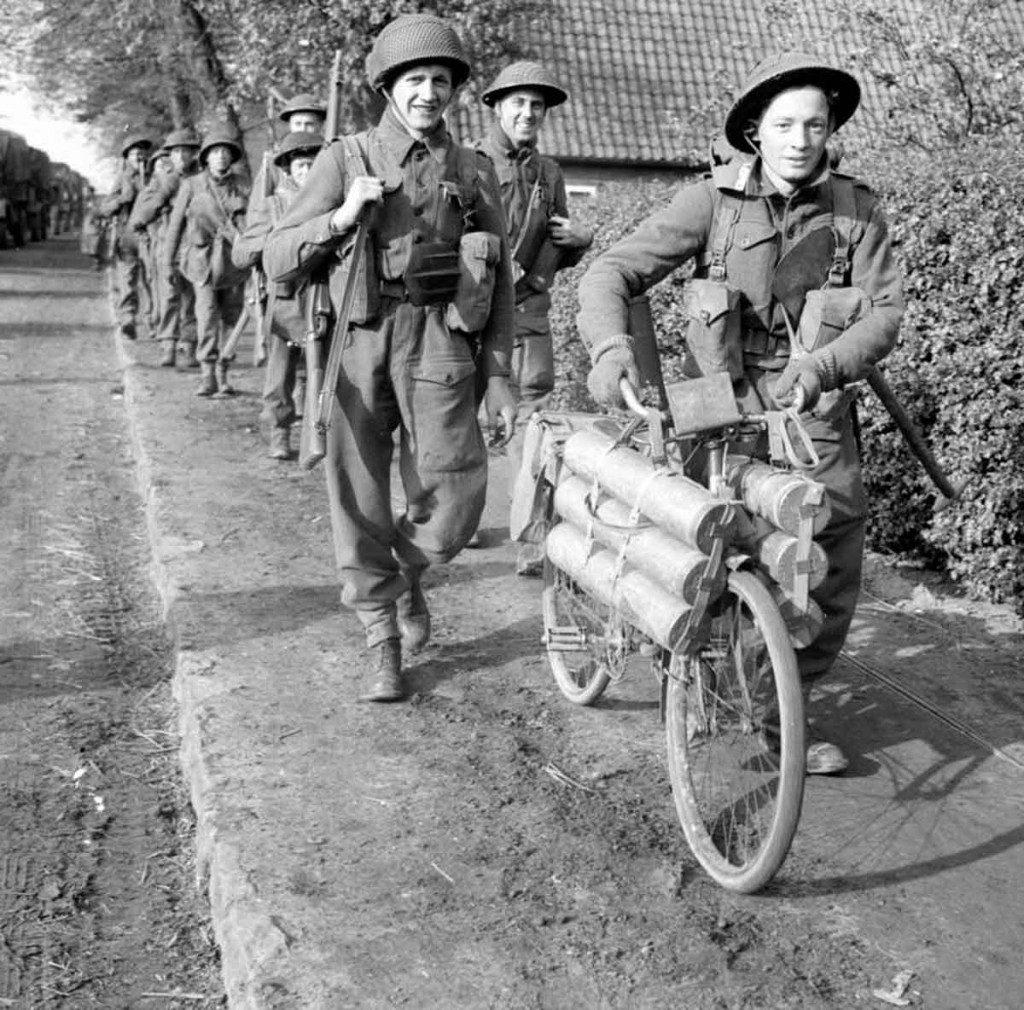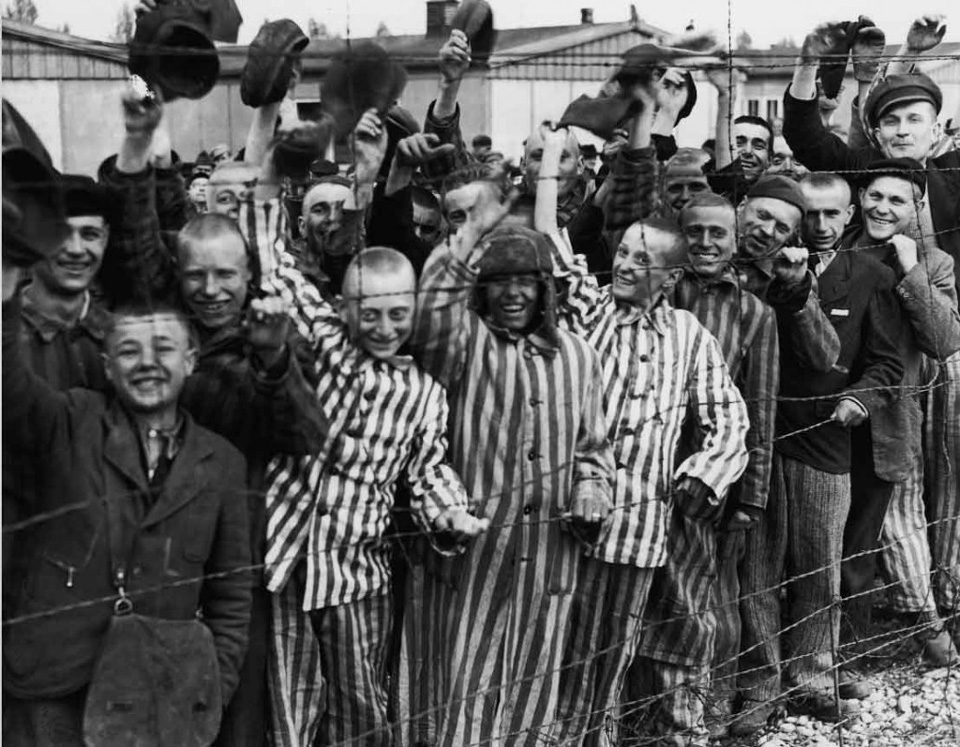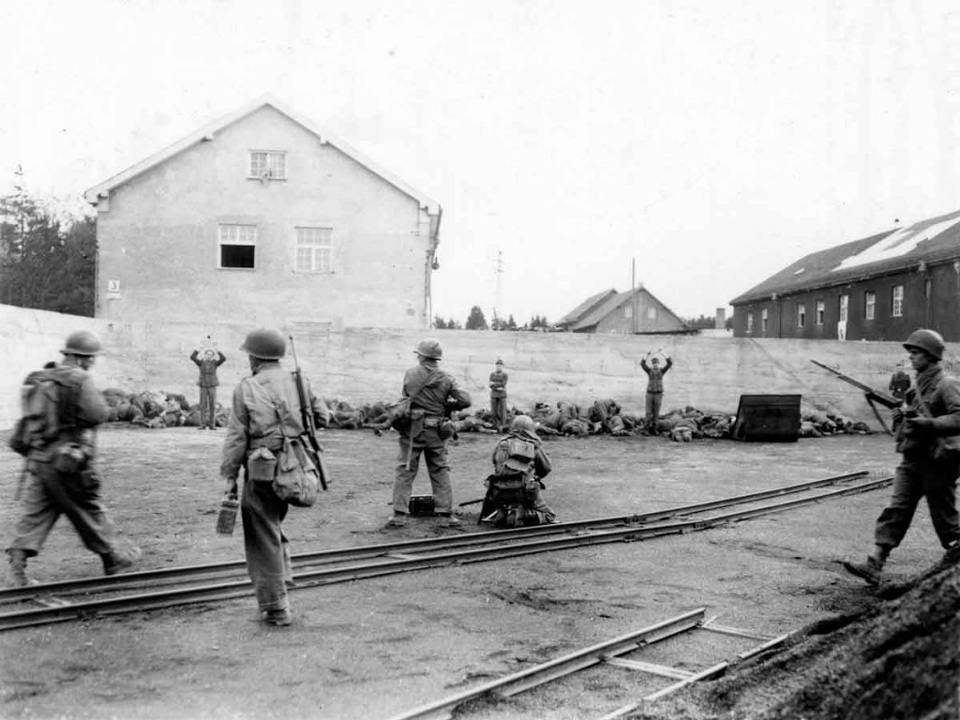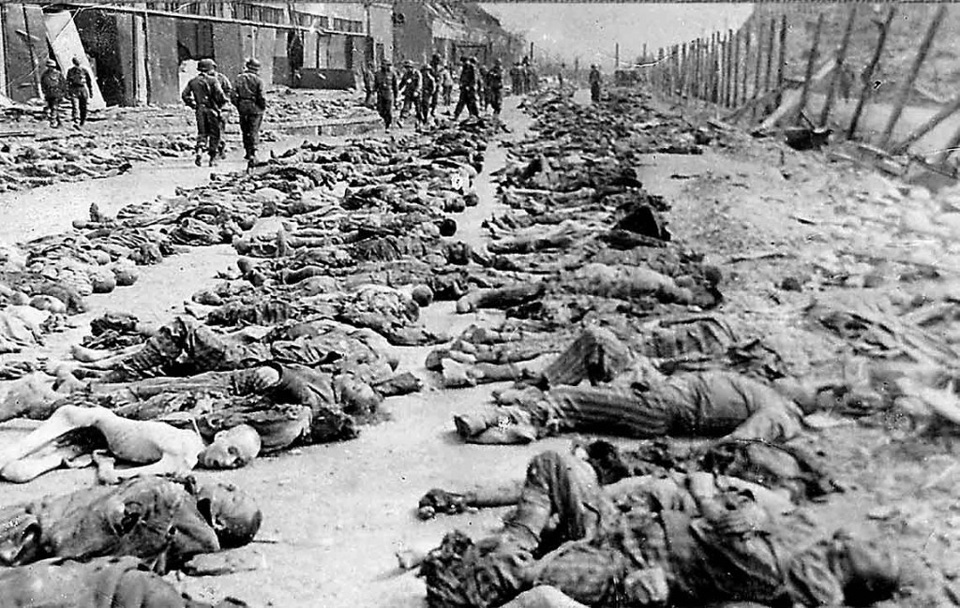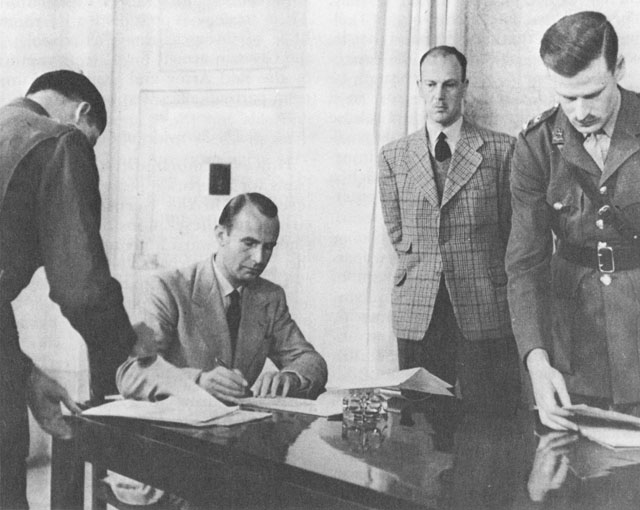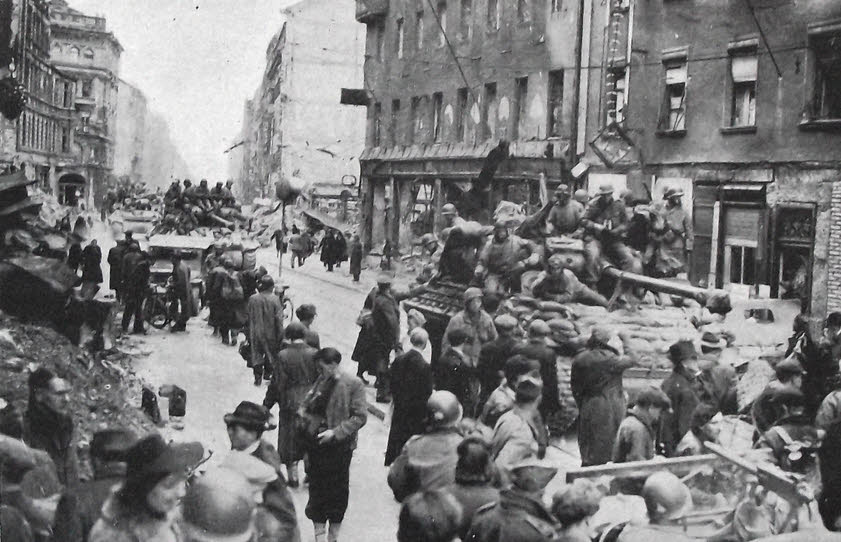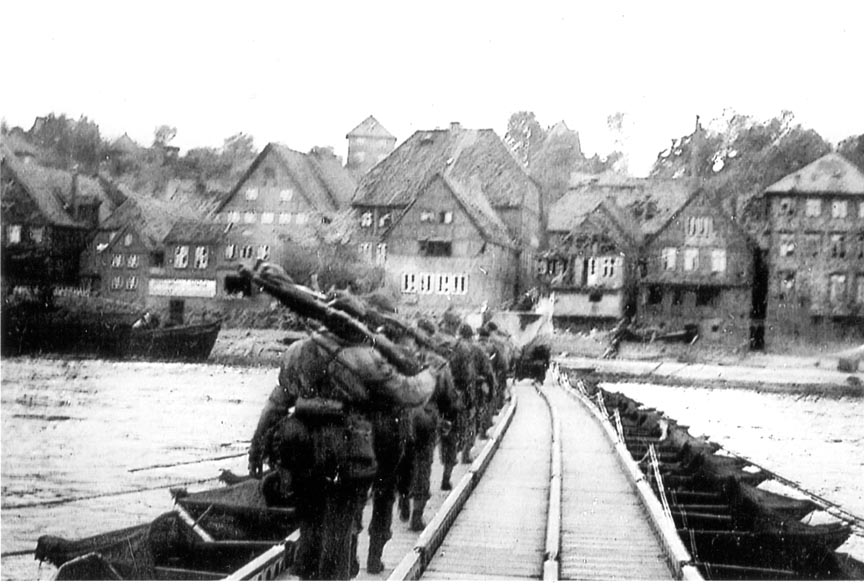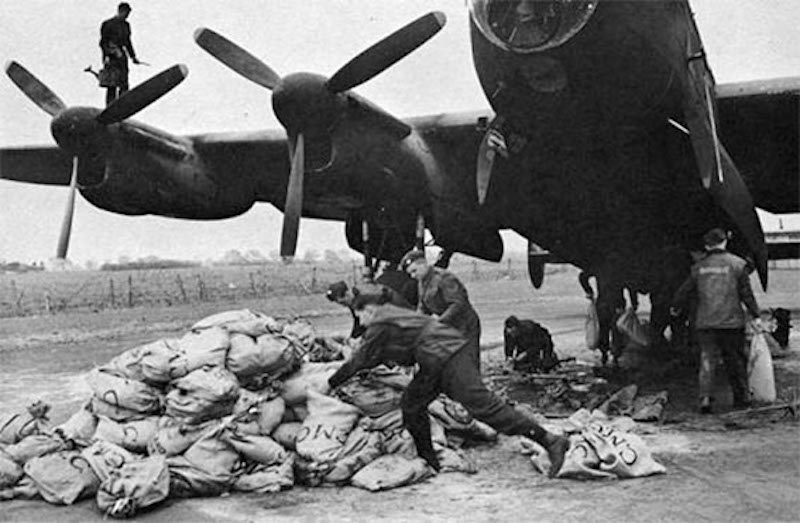Air Operations, Carolines
- 20 318th Fighter Group P-47s attack airfields and defenses in the Truk Atoll with rockets.
- 24 11th Heavy Bombt Group B-24s attack airfields in the Truk Atoll.
Air Operations, CBI
BURMA- 6 10th Air Force P-47s attack troops and horses at Tadamo.
- 5 P-47s attack the airfield at Laihka.
- 3 341st Medium Bomb Group B-25s and 4 14th Air Force P-47s attack rail yards at Taiyuan.
- Nearly 50 fighter-bombers operating in small flights attack the Fantung area and other targets in southern and eastern China.
- 16 18th Fighter Group P-38s attack the Thu Dan Mot airfield and sweep other areas of French Indochina.
Air Operations, East Indies
- XIII Bomber Command B-24s attack the Kuching airfield on Borneo, and the Mandai, Langaon and Mapanget airfield on Celebes.
- 42nd Medium Bomb Group B-25s attack Tarakan Island.
- Fleet Air Wing 10 PVs attack various targets on Borneo.
Air Operations, Europe
RAF BOMBER COMMANDDaylight Ops:
- A large pocket in Western Holland is still in German hands and the population is approaching starvation. Many old or sick people have already died. A truce is arranged with the local German commander and Lancasters of Nos. 1, 3 and 8 Groups start to drop food supplies for the civilian population. Pathfinder Mosquitos 'mark' the dropping zones. 2,835 Lancaster and 124 Mosquito flights are made before the Germans surrender at the end of the war and allow ships and road transport to enter the area. Bomber Command delivers 6,672 tons of food during Operation MANNA.
- More than 250 RAF aircraft drop emergency food supplies in the Netherlands on prearranged ares. The German 25th Army is still holding out in large pockets of the Netherlands, and the plight of the civilians was becoming desperate. Churchill estimated 3 million people are starving. He wrote on the 10th: 'We believe that large numbers are dying daily, and the situation must deteriorate rapidly now that communications between German and Holland are virtually cut. I fear we may soon be in the presence of a great tragedy.' Reichskommissar for the Netherlands Seyss-Inquart had agreed to the food relief flights.
ETO:
- The 9th Air Division is grounded by bad weather, but 9th Air Force fighters mount 387 effective sorties.
- 9th Air Force fighters destroy 191 motor vehicles, a tank, four locomotives, 52 rail cars, and 397 horse-drawn vehicles in territory still held by the German Army.
ITALY:
- 15th Air Force heavy bombers and 12th Air Force B-25s are grounded by bad weather, but XXII TAC P-47s attack lines of communication, claiming the destruction of more than 350 motor vehicles.
- During the night, XXII TAC A-20s and A-26s attack motor vehicles near Lake Como and on several roads leading out of northern Italy.
ITALY:
- 39 P-51s ot the 52nd and 325th Fighter Groups conduct the last 15th Air Force fighter sorties of the war when they bomb and strafe German Army troop positions and motor vehicles.
Air Operations, Japan
- 111 XXI Bomber Command B-29s attack the Kanoya, Kokubu, Miyakonojo and Miyazaki airfields on Kyushu and Kushira.
- 2 B-29s are lost.
- 6 28th Composite Bomb Group B-24s attack the Kataoka naval base using radar guidance, but 12 B-25s dispatched against other targets in the Kurile Islands abort in the face of bad weather.
Air Operations, Philippines
- V Bomber Command A-20s and V Fighter Command fighter-bombers attack targets and support US 6th Army ground forces throughout Luzon.
- 1st Marine Aircraft Wing PBJs, SBDs, and F4Us support the US X Corps on Mindanao.
- In an outstanding display of air supremacy and the level of precision now achieved as a matter of course by 5th Air Force fighter-bombers, 27 8th Fighter Group P-38s, each carrying 2 1,000-pound bombs, attack a US infantry company objective in southern Luzon. Attacking in 3 9-plane waves, the P-38 pilots place their bombs precisely on the targeted hill within 400 yards of the attacking infantry, which then walks over the hill and dispatches 124 relatively helpless Japanese Army soldiers who have been stunned by the concussion of the bombs.
Air Operations, Ryukyus
- US Navy and Marine Corps aircraft support the US 10th Army on Okinawa.
- and Task Unit 52.1.3 and Task Unit 52.1.1 TBMs and F6Fs attack airfields in the Sakishima Islands.
- A VC-92 TBM sinks an Japanese submarine near Okinawa.
- A VF-85 F4U downs a G4M 'Betty' bomber at sea at 0233 hours.
- US Navy carrier-based F6Fs down a D4Y 'Judy' dive bomber and 18 fighters over Kikai Shima and the vicinity of Task Force 58 between 1600 and 1750 hours.
- At 1657 hours, a Task Group 58.4 radar picket destroyer is severely damaged by a kamikaze, and a second Task Group 58.4 destroyer is severely damaged by a kamikaze at 1730 hours. The second ship sustains casualties of 46 killed and 26 wounded.
Arctic
- U-307 is one of a pack of U-boats gathered at Kola Inlet to await the sailing of Convoy RA-66. Frigates of Escort Group 19 and corvettes of Escort Group 7 sail in advance of the convoy to clear the U-boats from the approaches to the Inlet. U-307 is sunk by the British frigate Loch Insh.
- U-286 is detected by the British frigates Anguilla, Cotton and Loch Shin and destroyed in concerted depth-charge attacks.
|
|
Battle of the Atlantic
- Over the next three days, in the Arctic, the last convoy battle of World War II is fought around the convoy RA-66. This has 24 ships with an escort of two escort carriers, one cruiser, 9 destroyers and 13 other ships - a very lavish force when compared with any Arctic convoy in 1942, for example. There are 14 U-Boats involved in attacks. U-427 miraculously survives prolonged attacks with 678 depth charges. Not one merchant ship is sunk but one escort, the frigate Goodall, is hit and sinks and two U-boats are sunk.
- Liberator 'Q' of No 120 Squadron sights a snorkel wake off Malin Head and attacks with four depth charges together with a sonobuoy. The aircrew records long and drawn-out breaking up noises.
- U-325 had been ordered into the English Channel and then disappears. There is no Allied claim for her loss, and she may have been a victim of a mine or an operational accident.
|
|
Burma
In the Irrawaddy Valley Allanmyo falls to the advances of the 20th Indian Div of the XXXIII Corps. The remaining Japanese forces in this area are becoming very disorganized by the British attacks. In the Sittang Valley, the British IV Corps sector, the 17th Indian Div has now taken over the lead, and after capturing Nyaunglebim is attacking near Payagyi.
[China
The Chinese reinforce the defenses of Chihchiang and Ankiang with over 15,000 men of the new 6th Army.
[Eastern Front
The 2nd Belorussian Front advances rapidly along the Baltic coast toward Stralsund, taking Anklam and penetrating into Mecklenburg. In Czechoslovakia the 2nd Ukraine Front gains ground east of Brno and south of Olmütz. Southeast of Brno, the Russians capture Austerlitz, while the 4th Ukraine Front presses on relentlessly northwest of Moravska-Ostrava.
In Berlin the situation reaches its climax. Fierce fighting rages around the Reichstag and the Chancellery, along the Potsdamer Strasse and in the Belle Alliance Platz. South of Cottbus, the Germans hold Russian pressure in the area between Bautzen and Meissen.
In Berlin the Soviets make gains in the Moabit district and in the Wilmersdorf area. North of the capital Red Army units contiue their advance capturing Anklam and other towns. In the southern sectors of the front Soviet pressure in Austria and Czechoslovakia continues.
GERMANYThe Soviet 3rd Shock Army captures the Moltke Bridge. Around the Reichstag, the German LVI Panzer Corps is almost out of ammunition. Hitler orders the troops to fight to the last man and bullet. The Führer dictates his last political testament, in which he states: 'I die with a joyful heart in the awareness of the immeasurable deeds and achievements of our soldiers at the front, of our women at home, and achievements of our peasants and workers, and the contribution, unique in history, of our youth, which bears my name.'
The German 12th Army launches a desperate attack at Belzig against the Soviet 4th Guards Tank Army, which recaptures Potsdam and allows the survivors of the Halbe Pocket to escape west. The 3rd Panzer Army is in full retreat west.
MORAVIAGerman defenses in the country are now beginning to fall apart as the Soviet 38th and 1st Guards Armies continue to advance.[MORE]
[Germany, Home Front
Hitler, now confined to the Führerbunker behind the Reichs Chancellery, orders Col-Gen Ritter von Greim to leave Berlin and arrest Heinrich Himmler, head of the SS, for his attempts to seek peace with the Allies. Von Greim had been appointed commander-in-chief of the Luftwaffe on the 23rd following Hermann Göring's attempt to negotiate with the Allies on his behalf. Hitler marries Eva Braun and publishes his 'Political Testament', in which he blames international Jewry for the outbreak of the war.
Hitler orders that the war must be carried on from the 'Alpine Fortress' in the south of Germany, and appoints Grand Adm Karl Dönitz his successor as Head of State and describing how Germany has failed him in the struggle against Bolshevism.
[Italy
The surrender of the German forces in Italy is signed at Caserta in the south. The German representatives present here because of a secret negotiation between the head of the OSS mission in Switzerland, Allan Dulles, and the SS Gen Karl Wolff. These talks have been going on since much earlier in the year, but because of their clandestine nature the German representatives at Caserta cannot guarantee that the surrender will be ratified by Gen Heinrich von Vietinghoff.
Col Victor von Schweinitz and his adjutant, Maj Max Wenner, representing Gen von Vietinghoff, Commander of the German Army Group C in Italy, sign the document for the unconditional surrender of all German troops in Italy with effect from 1:00p.m. GMT on Wednesday, May 2, 1945. Besides British and American officers, the Russian Gen Kislenko is also present at the signing of the surrender. About 1 million German troops in northern Italy and Austria surrender.
However, the Allied advance goes on in north Italy; units of the American IV Corps reach Milan, which has already been liberated by the partisans, while the British V Corps reaches Venice and the New Zealand 2nd Div, British XIII Corps, advancing toward Trieste, reaches the Piave.
[Okinawa
In the center of the American positions, the 77th Div begins gradually to take over from the 96th Div, weakened by the severe fighting on the Maeda Escarpment. Violent Japanese counterattacks and attempts to infiltrate are held by the Americans in the central sector. The 383rd Inf captures a salient from which it is possible to bring down artillery fire on the center of Shuri, the site of the headquarters of the 32nd Army under Gen Mitsuru Ushijima. On Kochi Ridge, the 7th Div is pinned down by deadly Japanese fire and suffers heavy losses.
The kamikaze attacks on American ships off Okinawa continue; today's victims are the destroyers Hazlewood (DD-531) and Haggard (DD-555) and the light minelayers Shannon (DM-25) and Harry F. Bauer (DM-26).
The US Navy hospital ship Comfort is hit by a Japanese kamikaze.
[Pacific
- The Japanese submarine I-44 is sunk by aircraft (VC-92) from the US escort carrier Tulagi (CVE-72) in the Philippine Sea.
- The US submarine Besugo (SS-321) sinks the Japanese guardboat Otome Maru southeast of Borneo.
- The US submarine Bream (SS-243) sinks the German minesweeper depot ship Quito off Tanjong Puting, Borneo.
- The US submarine Cero (SS-225) sinks the Japanese merchant cargo ship Taishu Maru (6925t) off Kamaishi, Japan.
Philippines
Gen Rapp Brush's 185th Regt lands near Padan Point with support from a destroyer force led by Adm Arthur D. Struble. There is little Japanese resistance.
[Western Front
The VIII Corps, British 2nd Army, crosses the Elbe near Lauenburgh to begin the army's last action, the Baltic its objective. Lauenburg is captured trapping German forces in Denmark. The advance of the US 3rd Army in the Danube sector continues. The concentration camp at Dachau is liberated along with 30,000 surviving inmates by troops of US 3rd Army. Units of all corps reach the Isar River.
The XV Corps, US 7th Army, begins the assault on Munich and captures some suburbs of the city.
[Images from April 29, 1945
|
|
|
|
|
|
|
|
